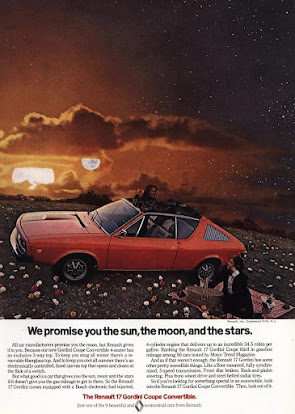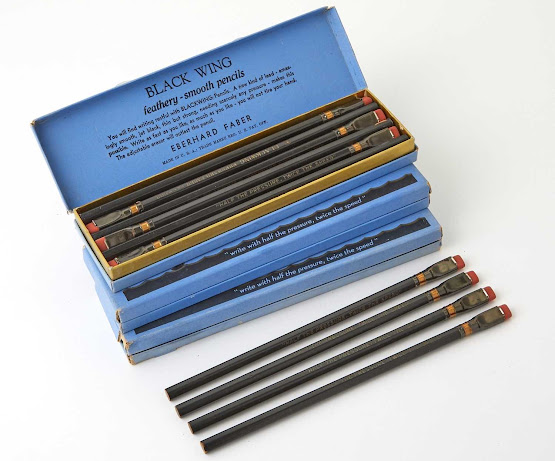Monolith (pronounced mon-uh-lith)
(1) A column, large statue etc, formed originally from a single
block of stone but latter day use applies the term to structures formed from
any material and not of necessity a single piece (although technically such a
thing should be described using the antonym: “polylith”.
(2) Used loosely, a synonym of “obelisk”.
(3) A single block or piece of stone, especially when
used in architecture or sculpture and applied most frequently to large
structures.
(4) Something (or an idea or concept) having a uniform,
massive, redoubtable, or inflexible quality or character.
(5) In
architecture, a large hollow foundation
piece sunk as a caisson and having a number of compartments that are filled
with concrete when it has reached its correct position
(6) An unincorporated community in Kern County,
California, United States (initial capital).
(7) In chemistry, a substrate having many tiny channels
that is cast as a single piece, which is used as a stationary phase for
chromatography, as a catalytic surface etc.
(8) In arboreal use, a dead tree whose height and size
have been reduced by breaking off or cutting its branches (use rare except in
UK horticultural use).
1829: The construct was mono- + lith. Mono was from the
Ancient Greek, a combining form of μόνος (monos)
(alone, only, sole, single), from the Proto-Hellenic mónwos, from the primitive Indo-European mey- (little; small). It was
related to the Armenian մանր (manr)
(slender, small), the Ancient Greek μανός (manós)
(sparse, rare), the Middle Low German mone
& möne, the West Frisian meun, the Dutch meun, the Old High German muniwa,
munuwa & munewa (from which
German gained Münne (minnow). As a prefix, mono- is often found in chemical
names to indicate a substance containing just one of a specified atom or group
(eg a monohydrate such as carbon monoxide; carbon attached to a single atom of
oxygen).
In English, the noun monolith was from the French monolithe (object made from a single
block of stone), from Middle French monolythe
(made from a single block of stone) and their etymon the Latin monolithus (made from a single block of
stone), from the Ancient Greek μονόλιθος (monólithos)
(made from a single block of stone), the construct being μονο- (mono-) (the prefix appended to convey
the meaning “alone; single”), from μόνος (monos)
+ λίθος (líthos) (a stone; stone as a substance). The English form was cognate with the German monolith (made from a single block of
stone). The verb was derived from the
noun. Monolith is a noun & verb,
monolithism, monolithicness & monolithicity are nouns, monolithic is an
adjective and monolithically is an adverb; the noun plural is monoliths. The adjective monolithal is listed as
"an archaic form of monolithic".
Monolith also begat two back-formations in the technical jargon of archaeology: A “microlith” is (1) a small stone tool (sometimes called a “microlite”) and (2) the microscopic acicular components of rocks. A “megalith” is (1) a large stone slab making up a prehistoric monument, or part of such a monument, (2) A prehistoric monument made up of one or more large stones and (3) by, extension, a large stone or block of stone used in the construction of a modern structure. The terms seem not to be in use outside of the technical literature of the profession. The transferred and figurative use in reference to a thing or person noted for indivisible unity is from 1934 and is now widely used in IT, political science and opinion polling. The adjective monolithic (formed of a single block of stone) was in use by the early nineteenth century and within decades was used to mean “of or pertaining to a monolith”, the figurative sense noted since the 1920s. The adjective prevailed over monolithal which seems first to have appeared in a scientific paper in 1813. The antonym in the context of structures rendered for a single substance is “polylith” but use is rare and multi-component constructions are often described as “monoliths”. The antonym in the context of “anything massive, uniform, and unmovable, especially a towering and impersonal cultural, political, or social organization or structure” is listed by many sources as “chimera” but terms like “diverse”, “fragmented” etc are usually more illustrative for most purposes. In general use, there certainly has been something of a meaning-shift. While "monolith" began as meaning "made of a single substance", it's now probably most used to covey the idea of "something big & tall" regardless of the materials used.
The mysterious black structures in Sir Arthur C Clarke's (1917–2008) Space Odyssey series (1968-1997) became well known after the release in 1968 of Stanley Kubrick's (1928–1999) film of the first novel in the series, 2001: A Space Odyssey. Although sometimes described as “obelisk”, the author noted they were really “monoliths”. In recent years, enthusiasts, mischief makers and click-bait hunters have been erecting similar monoliths in remote parts of planet Earth, leaving them to be discovered and publicized. With typical alacrity, modern commerce noted the interest and soon, replicas were being offered for sale, a gap in the market for Christmas gifts between US$10,000-45,000 apparently identified.
In IT, the term “monolithic driver” was used to refer to
a software driver designed to handle multiple hardware components or
functionalities within a single, large, and cohesive codebase. In this it differed from earlier (and later)
approaches which were modular or layered, the functionality is split into
separate, smaller drivers or modules, each of which handled specific tasks or
addressed only certain hardware components.
Monolithic drivers became generally available in the late 1980s, a
period when both computer architecture and operating systems were becoming more
sophisticated in an attempt to overcome the structural limitations imposed by
the earlier designs. It was in the era many
of the fundamental concepts which continue to underpin modern systems were conceived
although the general adoption of some lay a decade or more away.
During the 1970s & 1980s, many systems were built
with a tight integration between software and hardware and some operating
systems (OS) were really little more than “file loaders” with a few “add-ons”,
and the limitations imposed were “worked-around” by some programmers who
more-or-less ignored the operating system an address the hardware directly using
“assemblers” (a flavor of “machine-code”). That approach made for fast software but at
the cost of interoperability and compatibility, such creations hardware
specific rather using an OS as what came to be known as the HAL (hardware
abstraction layer) but at the time, few OSs were like UNIX with its monolithic
kernel in which the core OS services (file system management, device drivers
etc.) were all integrated into a single large codebase. As the market expanded, it was obvious the
multi-fork approach was commercially unattractive except for the odd niche.
After its release in 1981, use of the IBM personal computers (PC) proliferated and because of its open (licence-free) architecture, an ecosystem of third party suppliers arose, producing a remarkable array of devices which either “hung-off” or “plugged-in” a PC; the need for hardware drivers grew. Most drivers at the time came from the hardware manufacturers themselves and typically were monolithic (though not yet usually described as such) and written usually for specific hardware and issues were rife, a change to an OS or even other (apparently unrelated) hardware or software sometimes inducing instability or worse. As operating systems evolved to support more modularity, the term “monolithic driver” came into use to distinguish these large, single-block drivers from the more modular or layered approaches that were beginning to emerge.
It was the dominance of Novell’s Netware (1983-2009) on
PC networks which compelled Microsoft to develop Windows NT (“New Technology”, 1993)
and it featured a modular kernel architecture, something which made the
distinction between monolithic and modular drivers better understood and as developers
increasingly embraced the modular, layered approach which better handled maintainability
and scalability. Once neutral, the term “monolithic
driver” became something of a slur in IT circles, notably among system
administrators (“sysadmins” or “syscons”, the latter based on the “system
console”, the terminal on a mainframe hard-wired to the central processor) who
accepted ongoing failures of this and that as inherent to the business but
wanted to avoid a SPoFs (Single Point of Failure).
In political science, the term “monolithic” is used to
describe a system, organization, or entity perceived as being unified,
indivisible, and operating with a high degree of internal uniformity, often
with centralized control. When something is labeled as monolithic, it implies
that it lacks diversity or internal differentiation and presents a singular,
rigid structure or ideology. Tellingly,
the most common use of the term is probably when analyzing electoral behavior
and demonstrating how groups, societies or sub-sets of either. Although often
depicted in the media as “monolithic” in their views, voting patterns or
political behavior are anything but and there’s usually some diversity. In political science, such divergences within
defined groups are known as “cross-cutting cleavages”.
It’s used also of political systems in which a regime is structured (or run) with power is highly concentrated, typically in a single dictator or ruling party. In such systems, usually there is little effective opposition and dissent is suppressed (although some of the more subtle informally tolerate a number of “approved dissenters” who operated within understood limits of self-censorship. The old Soviet Union (the USSR (Union of Soviet Socialist Republics) 1922-1991), the Islamic Republic of Iran (1979-), the Republic of China (run by the Chinese Communist Party (CCP) (1949-) and the DPRK (Democratic Republic of Korea (North Korea) 1948-) are classic examples of monolithic systems; while the differences between them were innumerable, structurally all were (or are) politically monolithic. The word is used also as a critique in the social sciences, Time magazine in April 2014 writing of the treatment of “Africa” as a construct in Mean Girls (2004): “Like the original Ulysses, Cady is recently returned from her own series of adventures in Africa, where her parents worked as research zoologists. It is this prior “region of supernatural wonder” that offers the basis for the mythological reading of the film. While the notion of the African continent as a place of magic is a dated, rather offensive trope, the film firmly establishes this impression among the students at North Shore High School. To them, Africa is a monolithic place about which they know almost nothing. In their first encounter, Karen inquires of Cady: “So, if you’re from Africa, why are you white?” Shortly thereafter, Regina warns Aaron that Cady plans to “do some kind of African voodoo” on a used Kleenex of his to make him like her—in fact, the very boon that Cady will come to bestow under the monomyth mode.” It remains a sensitive issue and one of the consequences of European colonial practices on the African continent (something which included what would now be regarded as "crimes against humanity) so the casual use of "Africa" as a monolithic construct is proscribed in a way a similar of "Europe" would not attract criticism.
The limitations of the utility of the term mean it should
be treated with caution and while there are “monolithic” aspects or features to
constructs such as “the Third World”, “the West” or “the Global South”, the
label does over-simplify the diversity of cultures, political systems, and
ideologies within these broad categories.
Even something which is to some degree “structurally monolithic” like
the United States (US) or the European Union (EU) can be highly diverse in
terms of actual behavior. In the West
(and the modern-day US is the most discussed example), the recent trend towards
polarization of views has become a popular topic of study and the coalesced factions
are sometimes treated as “monolithic” despite in many cases being themselves
intrinsically factionalized.
























